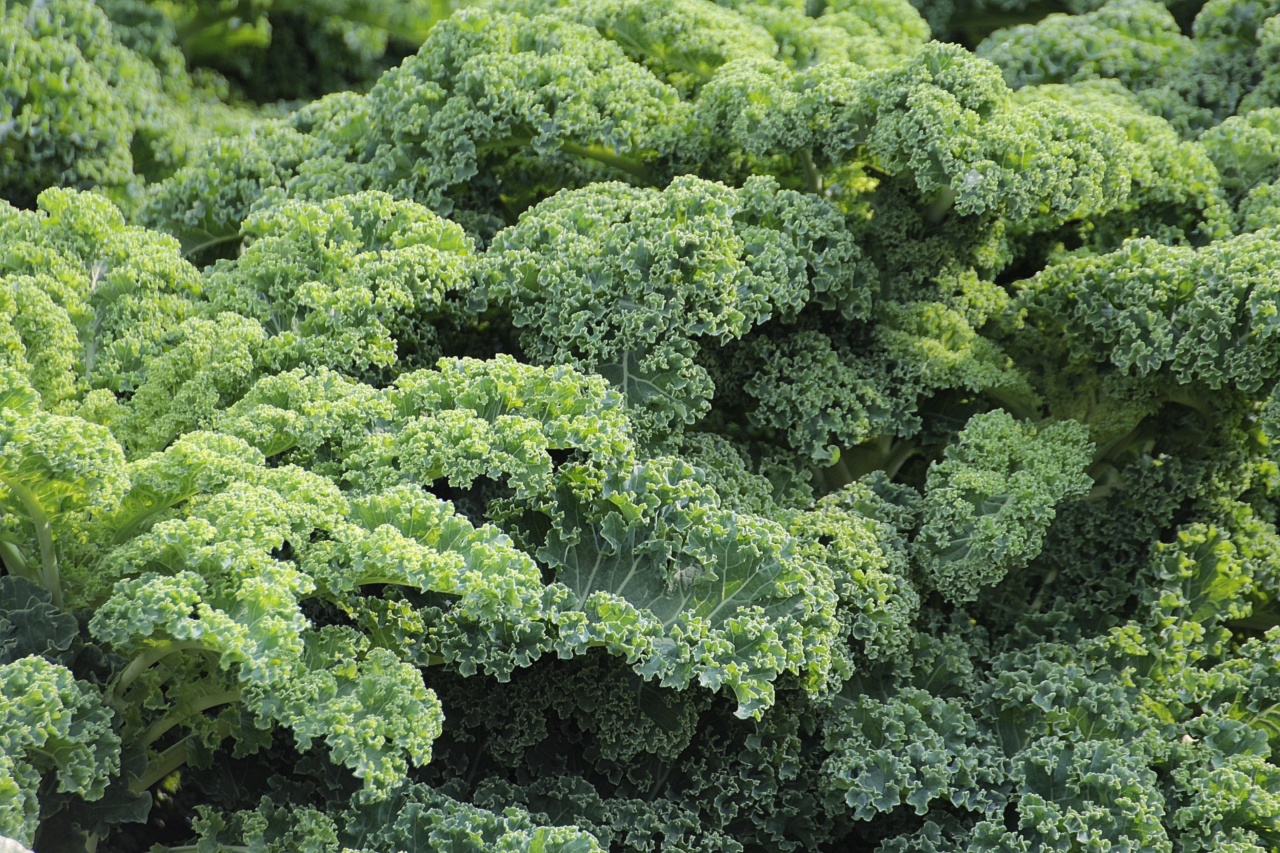Leafy green vegetables are known for their incredible health benefits. They are packed with essential nutrients, antioxidants, and fiber, making them an excellent addition to any diet.
When it comes to choosing the best leafy green, two popular options that often come to mind are kale and spinach. Both these greens are highly nutritious and offer numerous health benefits. But which one is better for you? Let’s compare kale and spinach to help you make an informed decision.
Nutritional Comparison
Before we delve into the specifics of kale and spinach, let’s take a look at their nutritional profiles:.
Kale:.
- Calories: 33
- Carbohydrates: 7 grams
- Fiber: 1 gram
- Protein: 2 grams
- Fat: 0 grams
- Vitamin A: 206% of the Daily Value (DV)
- Vitamin C: 134% of the DV
- Vitamin K: 684% of the DV
- Calcium: 9% of the DV
- Potassium: 9% of the DV
Spinach:.
- Calories: 23
- Carbohydrates: 4 grams
- Fiber: 2 grams
- Protein: 3 grams
- Fat: 0 grams
- Vitamin A: 56% of the DV
- Vitamin C: 14% of the DV
- Vitamin K: 181% of the DV
- Calcium: 9% of the DV
- Potassium: 9% of the DV
From the above comparison, we can see that both kale and spinach are low in calories and fat but high in essential nutrients. Kale surpasses spinach in terms of vitamin A, vitamin C, and vitamin K.
Spinach, on the other hand, is slightly higher in protein and fiber. However, the nutritional differences between the two greens are not significant, and both can contribute to a healthy and balanced diet.
Health Benefits of Kale
Kale is often considered a superfood due to its exceptional nutrient composition. Here are some of the health benefits associated with consuming kale:.
1. High in Antioxidants
Kale contains a variety of antioxidants, including beta-carotene, vitamin C, and various flavonoids. Antioxidants help protect the body against oxidative stress and reduce the risk of chronic diseases like heart disease and certain types of cancer.
2. Excellent Source of Vitamin K
A single serving of kale provides a considerable amount of vitamin K, which is essential for blood clotting and bone health. Vitamin K also plays a role in reducing inflammation in the body.
3. Supports Heart Health
The high fiber content in kale promotes healthy cholesterol levels and reduces the risk of cardiovascular diseases. Additionally, kale contains compounds like kaempferol and quercetin, which have been linked to improved heart health.
4. Anti-Inflammatory Properties
Kale contains several compounds that have anti-inflammatory effects. These compounds may help alleviate symptoms of chronic inflammation and reduce the risk of developing inflammatory diseases.
5. Promotes Eye Health
Kale is rich in lutein and zeaxanthin, antioxidants that are essential for maintaining eye health. These compounds help protect against age-related macular degeneration and cataracts.
Health Benefits of Spinach
While kale steals the spotlight in the superfood world, spinach is no less impressive when it comes to nutritional value and health benefits. Here are some reasons why spinach should be part of your leafy green choices:.
1. Rich in Iron
Spinach is an excellent source of iron, which is necessary for the production of healthy red blood cells. Consuming spinach regularly can help prevent iron deficiency anemia and promote proper oxygenation of the body.
2. Supports Bone Health
Spinach contains significant amounts of calcium, magnesium, and vitamin K, all of which contribute to maintaining strong and healthy bones. Regular consumption of spinach can help reduce the risk of osteoporosis.
3. Provides Antioxidant Protection
Similar to kale, spinach is packed with antioxidants that help protect against chronic diseases.
Spinach’s combination of antioxidants, including vitamins C and E, beta-carotene, and lutein, strengthens the immune system and fights oxidative stress.
4. Promotes Digestive Health
The fiber content in spinach aids in promoting healthy digestion and preventing constipation. Spinach also contains compounds that support the growth of beneficial gut bacteria, contributing to overall gut health.
5. Boosts Brain Function
Spinach contains several nutrients, including folate, vitamin E, and vitamin K, which are known to support brain health and cognitive function. Regular consumption of spinach may help slow down age-related cognitive decline.
Ways to Incorporate Kale and Spinach into Your Diet
Both kale and spinach can be versatile additions to various dishes. Here are some delicious and healthy ways to incorporate these leafy greens into your daily diet:.
1. Salads
Add kale or spinach to your regular salad for an extra boost of nutrients. Combine them with other vegetables, fruits, nuts, and seeds to create a refreshing and nutritious salad.
2. Smoothies
Add a handful of kale or spinach to your favorite smoothie recipe. The mild taste of these greens blends well with fruits and other ingredients, making it a convenient way to increase your leafy green intake.
3. Soups and Stews
Include kale or spinach in your homemade soups and stews. They will not only enhance the flavor but also add a nutritional punch to your dish.
4. Sautéed or Steamed
Sauté kale or spinach with garlic and olive oil for a quick and healthy side dish. Alternatively, steam them lightly and serve as a nutritious accompaniment to your main meal.
5. Wraps and Sandwiches
Use large kale or spinach leaves as an alternative to traditional wraps or bread for your sandwiches. They provide extra vitamins and minerals while reducing the calorie content of your meal.
Conclusion
When it comes to choosing between kale and spinach, there is no clear winner. Both leafy greens offer an array of health benefits and can be incorporated into your diet in numerous ways.
Whether you prefer the robustness of kale or the versatility of spinach, adding either of these greens to your meals will surely contribute to a well-rounded and nutritious diet.






























